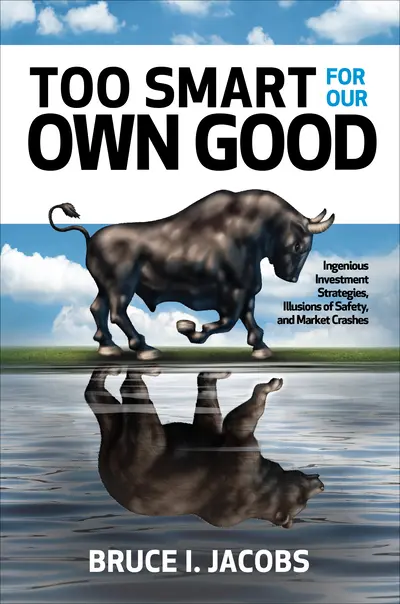My Account Details

ISBN10: 1260440540 | ISBN13: 9781260440546

Step 1 . Download Adobe Digital Editions to your PC or Mac desktop/laptop.
Step 2. Register and authorize your Adobe ID (optional). To access your eBook on multiple devices, first create an Adobe ID at account.adobe.com. Then, open Adobe Digital Editions, go to the Help menu, and select "Authorize Computer" to link your Adobe ID.
Step 3. Open Your eBook. Use Adobe Digital Editions to open the file. If the eBook doesn’t open, contact customer service for assistance.
How investment strategies designed to reduce risk can increase risk for everyone—and can crash markets and economies Financial crises are often blamed on unforeseeable events, the unforgiving nature of capital markets, or just plain bad luck. Too Smart for Our Own Good argues that these crises are caused by certain alluring investment strategies that promise both high returns and safety of capital. In other words, the severe and widespread crises we have suffered in recent decades were not perfect storms. Instead, they were made by us. By understanding how and why this is so, we may be able to avoid or ameliorate future crises—and maybe even anticipate them. One of today’s leading financial thinkers, Bruce I. Jacobs, examines recent financial crises—including the 1987 stock market crash, the 1998 collapse of the hedge fund Long-Term Capital Management, the 2007–2008 credit crisis, and the European debt crisis—and reveals the common threads that explain these market disruptions. In each case, investors in search of safety were drawn to novel strategies that were intended to reduce risk but actually magnified it—and blew up markets. Too Smart for Our Own Good takes a behind-the-curtain look at: • The inseparable nature of investment risk and reward and the often counterproductive effects of some popular approaches for reducing risk • A trading strategy known as portfolio insurance and the key role it played in the 1987 stock market crash • How option-related trading disrupted markets in the decade following the 1987 crash • Why the demise of Long-Term Capital Management in 1998 wreaked havoc on US stock and bond markets • How mortgage-backed financial products, by shifting risk from one party to another, created the credit crisis of 2007–2008 and contributed to the subsequent European debt crisis This broad, detailed investigation of financial crises is the most penetrating and objective look at the subject to date. In addition, Jacobs, an industry insider, offers invaluable insights into the nature of investment risk and reward, and how to manage risk. Risk is unavoidable—especially in investing—and financial markets connect us all. Until we accept these facts and manage risk in responsible ways, major crises will always be just around the bend. Too Smart for Our Own Good is a big step toward smarter investing—and a better financial future for everyone.
Exhibits
Acknowledgments
Introduction: Creating Financial Storms
Part I
Chapter 1: Reducing Risk
Part II
Chapter 2: Black Monday 1987
Chapter 3: Replicating Options
Chapter 4: Portfolio Insurance and Futures Markets
Chapter 5: Portfolio Insurance and the Crash
Chapter 6: After the 1987 Crash--Options
Part III
Chapter 7: Options, Hedge Funds, and the Volatility of 1998
Chapter 8: Long-Term Capital Management
Chapter 9: Long-Term Capital Management Postmortem
Part IV
Chapter 10: The Credit Crisis and Recession, 2007-2009
Chapter 11: Blowing Bubbles
Chapter 12: Weapons of Mass Destruction
Chapter 13: Securitization and the Housing Bubble
Chapter 14: Securitization and the Credit Crisis
Part V
Chapter 15: After the Storm, 2010-2018
Chapter 16: The European Debt Crisis
Chapter 17: Illusions of Safety and Market Meltdowns
Chapter 18: Taming the Tempest
Appendix A: Foreshadowing the Crises: The Crash of 1929
Appendix B: Primer on Bonds, Stocks, and Derivatives
Appendix C: The Debate on Portfolio Insurance
Appendix D: Derivatives Disasters in the 1990s
Appendix E: Bruce Jacobs's Research Objectivity Standards Proposal
Acronyms
Glossary
Endnotes
Bibliography
Index
Need support? We're here to help - Get real-world support and resources every step of the way.